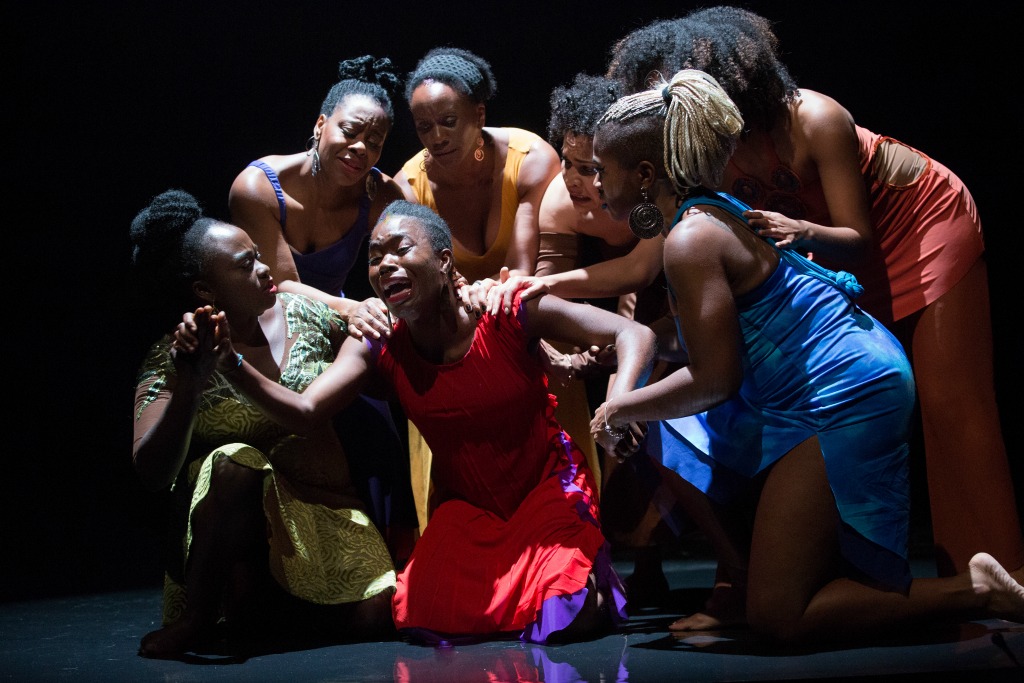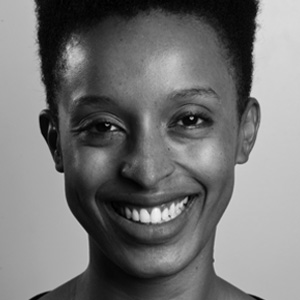The Play That Made Me Love the Theatre
On the first day of rehearsals for for colored girls…, director Djanet Sears asked every single person in the room to share what got them into theatre, and what made them stay in the industry. To be honest, I found this to be a hard question. Over the last few years, I’ve moved from one project to the next so fast that I’ve had little time to stop and reflect on why I’m still a theatre artist. But I recently became a mother, and I have found myself questioning my career. The long hours, the underpaid work, and the very clear understanding of how financially unsustainable theatre is has become jarringly apparent.
The question of what got me interested in theatre, though, was easier to answer. for colored girls who have considered suicide/when the rainbow is enuf was the very first play I ever directed. The fact that I am returning to it now, more than a decade later, in a different role—assistant director—feels significant.
Throughout my childhood, I lived in my imagination: reading, writing, making up stories, and performing in my school, in my church. Make-believe was central to my identity.
I was born and raised in Nairobi, Kenya. My family immigrated to Victoria, BC when I was fourteen years old. When I became an immigrant in Canada, I went from belonging to a racial and ethnic majority to being an outsider, an alien in a foreign land. My immigration experience left an indelible mark on me. I had to learn a new cultural dance every day while trying to find out who I was, as every teenager has to. But, inside all that, storytelling remained a consistent part of my being. Theatre was a place where I wrestled with these questions of identity, of existence.
When it came time to go to university, I was torn as to whether or not I should pursue theatre professionally. As a child of immigrants, I was encouraged to study my other—more lucrative—interests. So I chose human biology and history, and did theatre as an extracurricular.
I was in my second year at the University of Toronto, playing Tituba in Arthur Miller’s The Crucible, when I became aware that roles available for women of colour were few and far between. I wanted to see more representation on stage and it occurred to me that one way to make sure that was possible was to become a director.
I spent weeks at the library reading as many plays by Africans, African Canadians, and African Americans as I could. I came across Ntozake Shange’s for colored girls… and I fell in love. Here was a play with not just one strong black female character, but seven! Seven women of colour with different lived experiences—from abandonment to abortion to domestic violence—taking centre stage to tell their stories in a style that resonated with me artistically. The play is made up of twenty poems, with movement and song woven throughout the piece in an innovative and fluid manner, unapologetically giving space for black women to reclaim their voices. When the manager of Hart House Theatre agreed to let me direct the production, he changed my life. That’s when I became interested in pursuing theatre professionally.

For Colored Girls. Photo by Cylla von Tiedemann.
The play has come back into my life more than a decade later. When I was asked to be the assistant director on Soulpepper’s production during my time at the Soulpepper Academy, I thought, how curious it is that the show is being produced for the first time by a major institution in Canada, at a time when I am a resident at the company. I thought, this must mean something, somehow. Because for colored girls… has never left me. It created so much space for me to know myself as a young artist. It helped me discover a big part of my aesthetic: interdisciplinary work melding poetry, movement, and song. It has informed a lot of what I’ve developed since starting my company, It’s a Freedom Thing Theatre: new work from Africa and the diasporas that focuses on the social politics of identity, power, history, and culture.
When I picked up for colored girls… all this time later, I remembered each poem so intimately, so clearly, it was as if the play had etched itself into my heart and my brain ten years earlier; as if I had never put the script down since first touching it. Only this time, it felt even more personal. I could see myself in many more of the experiences of the women Shange wrote about. I could see my friends in these women. Each piece spoke to me anew.
Shange’s poetry is deeply layered social, political, and personal work, often alluding to more than one thing at the same time. Her words are succinct and nothing is superfluous. The text is specific to the social and cultural context of the time she was writing—1970s Black America—yet it resonates universally. Shange even updated it in 2010, adding a new poem and revisiting a pivotal monologue, to give it an added resonance.
Djanet wanted to approach Shange like we approach Shakespeare. She wanted to dig deeper into the text, with the same careful eye and rigour that we would normally apply to a classic from a Western European context.
In doing this, we have looked at how women find healing by speaking their secrets out loud, by speaking the things that, as women, we have been trained to keep silent, and by moving from isolation towards community to share our secrets. We have come to see the heart of the play as a healing ritual and a love letter to our sisters.
I have been in awe of the community of women that Djanet has gathered to tell this story. My spirit lifts in their midst as we dissect Shange and share stories about our lives. I have felt myself vulnerable in the realization of how many untold stories still live within me. I recognize that a big part of my own need to do theatre and to tell stories now is so that I can continue to heal as a colonized person, as a racialized person, and as an African woman on this planet. Theatre allows me the space to do that.
On that first day of rehearsal, when Djanet asked us the question—why theatre, why still—I expressed some of this. But I did not understand as fully or deeply as I do now.









Comments